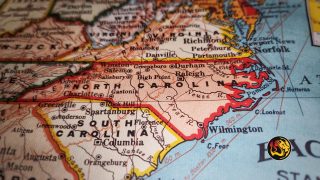Helene Rescues Top 2,100; Death Toll at 204 and Rising

By Alan Wooten | The Center Square
(Worthy News) – More than 2,100 have been rescued in North Carolina, the federal government said Thursday as the death toll from Hurricane Helene reached 204, fifth deadliest in the last three quarters of a century.
The Federal Emergency Management Agency said 38 search and rescue teams are in operation, cellular connectivity is at 62%, and distribution of commodities, feeding and hydration is happening throughout western North Carolina. The Appalachian Mountain region from Virginia to South Carolina and Georgia absorbed 24 inches of rain in many places, and more than 30 in some locations.
Buncombe County, home of the region’s largest city of Asheville at just under 100,000, has reported 61 deaths. Thursday marked the seventh day of search and rescue and eighth day since Helene crashed into the Big Bend of Florida as a Category 4 hurricane with sustained winds of 140 mph.
Damage estimates for the Southeast range from $95 billion to $160 billion, pending the metrics of inclusion up to and including economic loss. For example, property damage estimates are in the range of $15 billion to $26 billion; and published reports say a U.S. Department of Agriculture official estimated $7 billion in insurance payouts for crop losses alone. AccuWeather estimates total damage and economic loss between $145 billion and $160 billion.
“The federal relief and assistance that we have been providing has included FEMA providing $750 for folks who need immediate needs being met, such as food, baby formula and the like,” said Vice President Kamala Harris on a visit to Augusta, Ga., on Wednesday. “You can apply now for anyone who is watching this, who has been affected. There are FEMA personnel who are going door to door to interact personally with folks, especially those who do not have electricity.
“FEMA is also providing tens of thousands more dollars for folks to help them be able to deal with home repair, to be able to cover a deductible when and if they have insurance, and also hotel costs.”
Midafternoon Thursday, the Carolinas, Georgia, Virginia and Florida still had more than 933,000 without power. That figure included 356,561 in North Carolina. It had been more than 1 million.
A release from U.S. Rep. Chuck Edwards, R-N.C., says 142 water systems are on a boil advisory, 69 plants have no power and 47 systems are out of water. About 217,000 are without power in the western part of the state, the release says; 93% of substations have been restored online; and 16 CVS pharmacies are closed in his district.
According to DriveNC.org, Helene has caused 540 road closures as of 3 p.m. Thursday. The number has increased steadily over the previous 36 hours. It includes three interstates, 36 federal highways, 51 state roads, and 450 secondary roads. More than 100 roads have been reopened.
The infrastructure collapse has led to some areas only accessible by air, others by foot. Social media has shown a helicopter pilot finding someone who flashed a sun-kissed mirror in a grassy valley, enabling medicine to be delivered; and mules taking supplies to include insulin up the muddied paths once home to vehicles.
Edwards said in the release, “Please do not try to visit or travel through the areas hardest hit by the storm such as Henderson and Buncombe counties. However, I’m here to remind you that Cherokee, Graham and Swain counties are open, and they are desperately in need of visitors to support their economy. These counties have been going above and beyond for their neighbors to get supplies into the hardest hit counties, but could use some support, too.
“Small business owners in far western counties rely on tourism to get by each year.”
Edwards said with the blanket “do not drive” to western North Carolina, the businesses in that southwestern-most pocket of the state have had cancellations pile up.
Eight hurricanes since 1950 have killed 100 or more people. Helene is only eclipsed – so far – by Katrina (2005, deaths 1,392), Audrey (1957, deaths 416), Camille (1969, deaths 256) and Sandy (2012, deaths 219). Thursday’s reports pushed it past Diane (1955, deaths 184).
Asheville’s flood woes are compared to 1916, when in fact mules hauling supplies were more the norm. In July that year, a hurricane made landfall from the Gulf of Mexico and trekked toward northern Alabama and Tennessee to dump rainfall in western North Carolina, and a second hurricane about a week later made landfall at Charleston, S.C., and headed for the mountains.
The sequence came to be known as the Great Flood of 1916.
